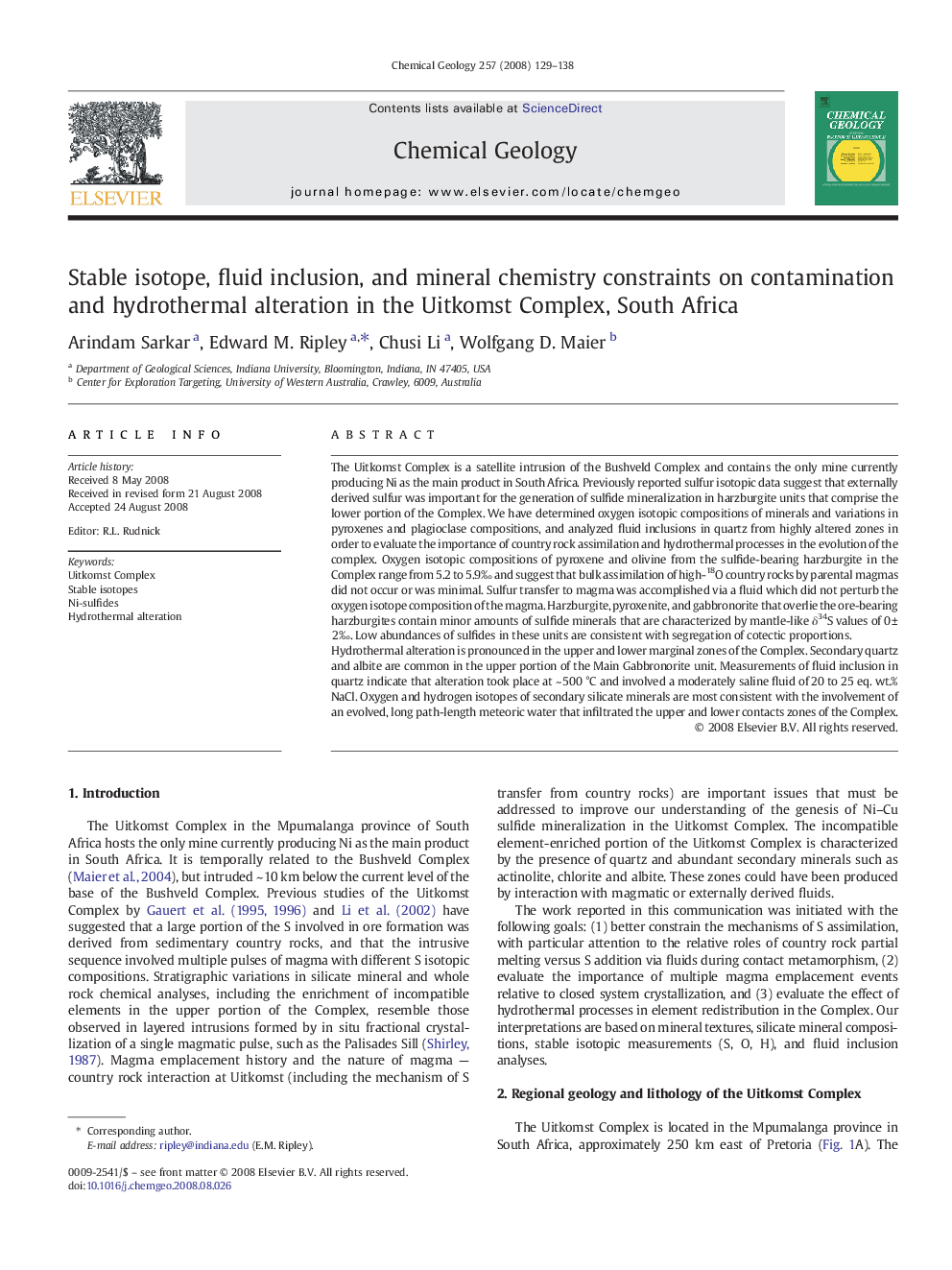| کد مقاله | کد نشریه | سال انتشار | مقاله انگلیسی | نسخه تمام متن |
|---|---|---|---|---|
| 4700534 | 1637718 | 2008 | 10 صفحه PDF | دانلود رایگان |

The Uitkomst Complex is a satellite intrusion of the Bushveld Complex and contains the only mine currently producing Ni as the main product in South Africa. Previously reported sulfur isotopic data suggest that externally derived sulfur was important for the generation of sulfide mineralization in harzburgite units that comprise the lower portion of the Complex. We have determined oxygen isotopic compositions of minerals and variations in pyroxenes and plagioclase compositions, and analyzed fluid inclusions in quartz from highly altered zones in order to evaluate the importance of country rock assimilation and hydrothermal processes in the evolution of the complex. Oxygen isotopic compositions of pyroxene and olivine from the sulfide-bearing harzburgite in the Complex range from 5.2 to 5.9‰ and suggest that bulk assimilation of high-18O country rocks by parental magmas did not occur or was minimal. Sulfur transfer to magma was accomplished via a fluid which did not perturb the oxygen isotope composition of the magma. Harzburgite, pyroxenite, and gabbronorite that overlie the ore-bearing harzburgites contain minor amounts of sulfide minerals that are characterized by mantle-like δ34S values of 0 ± 2‰. Low abundances of sulfides in these units are consistent with segregation of cotectic proportions.Hydrothermal alteration is pronounced in the upper and lower marginal zones of the Complex. Secondary quartz and albite are common in the upper portion of the Main Gabbronorite unit. Measurements of fluid inclusion in quartz indicate that alteration took place at ~ 500 °C and involved a moderately saline fluid of 20 to 25 eq. wt.% NaCl. Oxygen and hydrogen isotopes of secondary silicate minerals are most consistent with the involvement of an evolved, long path-length meteoric water that infiltrated the upper and lower contacts zones of the Complex.
Journal: Chemical Geology - Volume 257, Issues 1–2, 30 November 2008, Pages 129–138